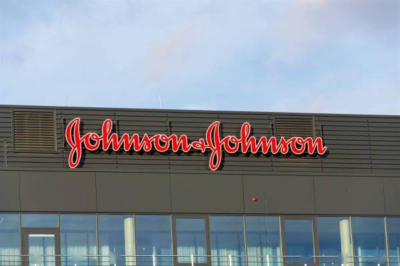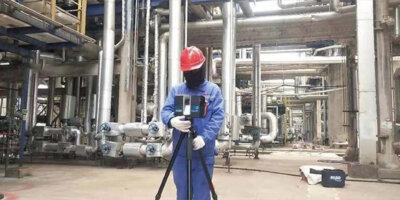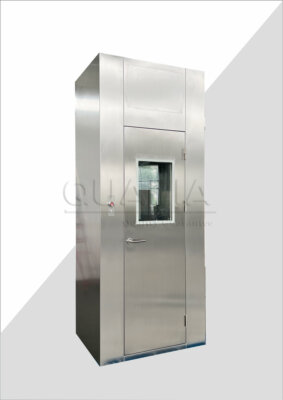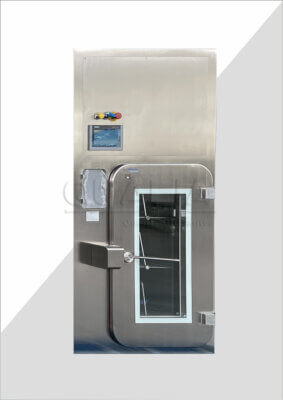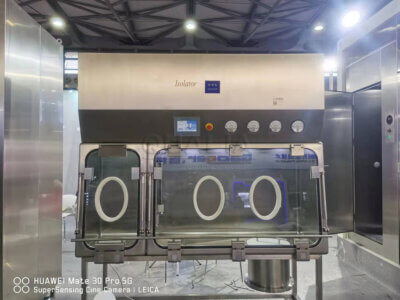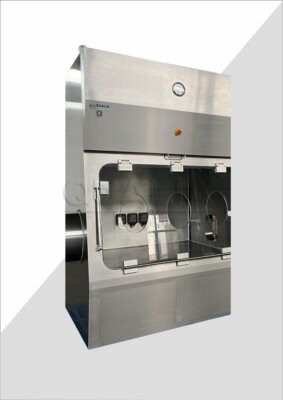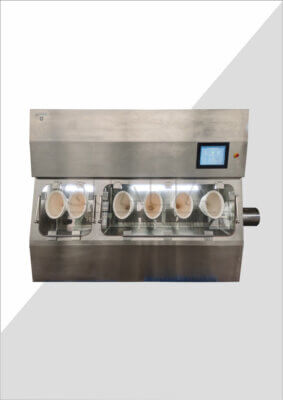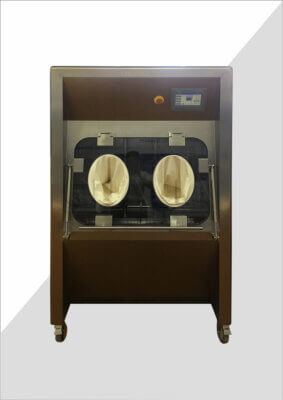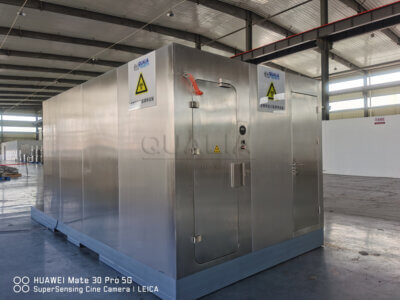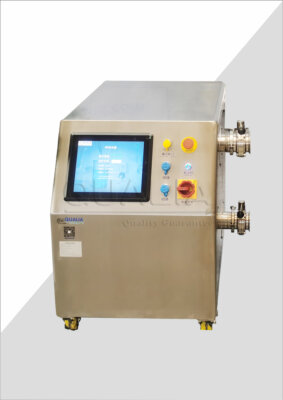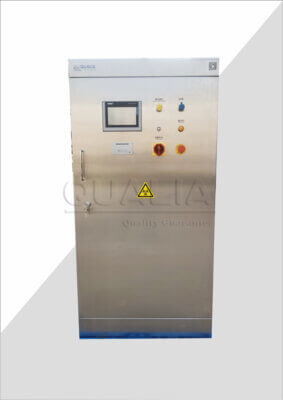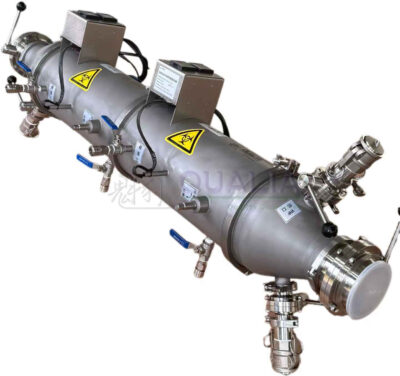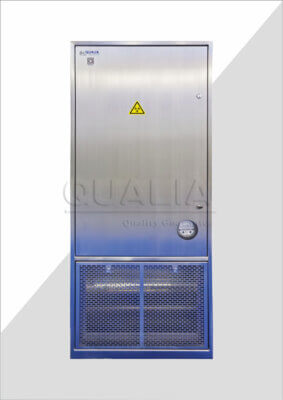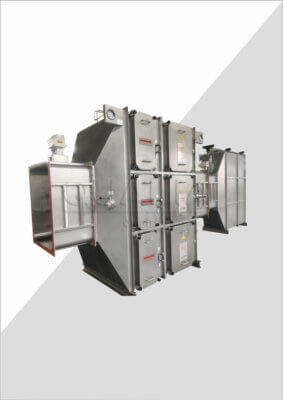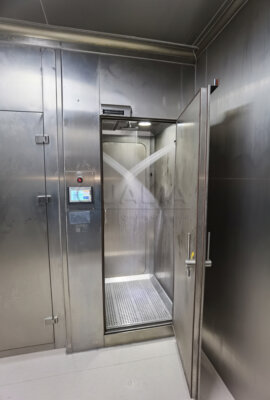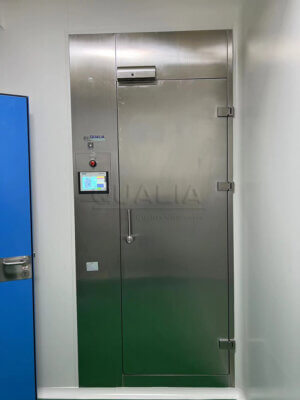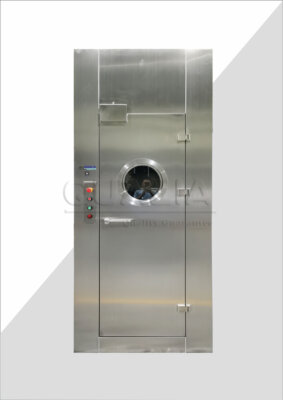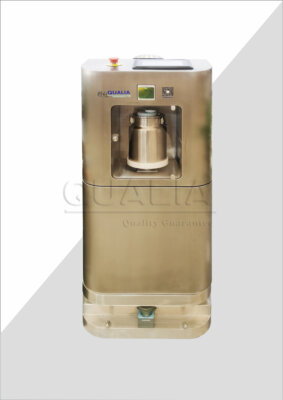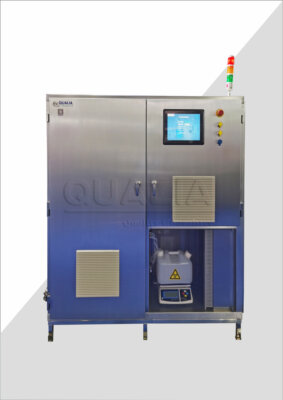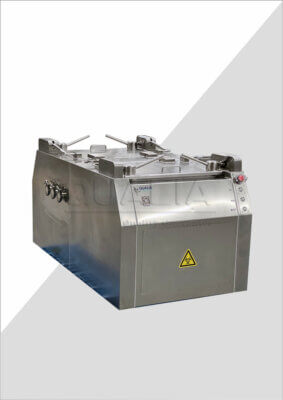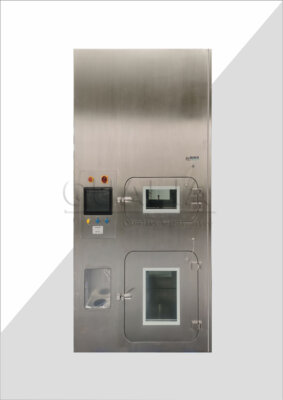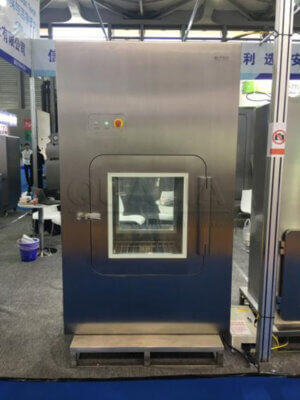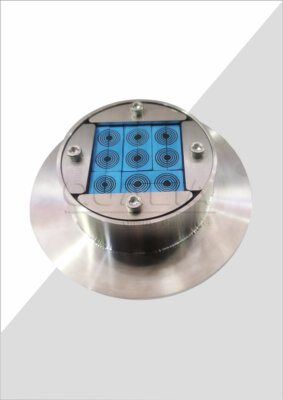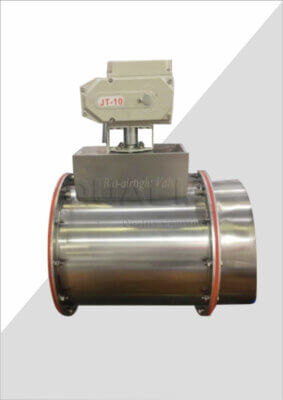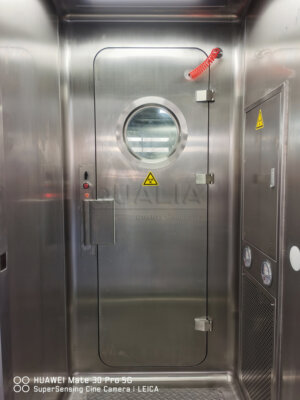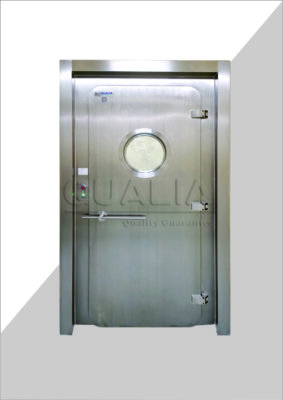Vaporized Hydrogen Peroxide (VHP) sterilization has emerged as a game-changing technology in the medical and pharmaceutical industries. As we look ahead to 2025, the advantages of this innovative sterilization method are becoming increasingly apparent. From its superior efficacy against a wide range of microorganisms to its environmental friendliness, VHP sterilization is revolutionizing how we approach the critical task of ensuring sterility in medical devices and pharmaceutical products.
In this comprehensive article, we'll explore the top 10 advantages of VHP sterilization that are set to make a significant impact in 2025. We'll delve into its efficacy, safety profile, cost-effectiveness, and compatibility with various materials. Additionally, we'll examine how VHP sterilization is meeting the growing demand for more sustainable and efficient sterilization methods in an era of increased focus on environmental responsibility and operational efficiency.
As we transition into the main content, it's important to note that the landscape of sterilization technologies is constantly evolving. However, VHP sterilization stands out as a method that not only meets current needs but is also well-positioned to address future challenges in the sterilization field.
VHP sterilization is poised to become the gold standard for medical device and pharmaceutical sterilization by 2025, offering unparalleled advantages in efficacy, safety, and sustainability.
Why is VHP Sterilization Gaining Popularity in the Medical Industry?
The medical industry is constantly seeking more effective, safer, and more efficient sterilization methods. VHP sterilization has been gaining traction due to its numerous benefits over traditional sterilization techniques.
VHP sterilization uses hydrogen peroxide vapor to eliminate microorganisms, including bacteria, viruses, and spores. This method has proven to be highly effective while also being gentler on medical devices and equipment compared to other sterilization methods.
One of the key reasons for its growing popularity is its ability to sterilize heat-sensitive and moisture-sensitive materials without causing damage. This makes it an ideal choice for a wide range of medical devices and equipment.
According to industry experts, VHP sterilization is expected to dominate the medical sterilization market by 2025, with an estimated market share of 40%.
| Sterilization Method | Market Share (2025 Projection) |
|---|---|
| VHP Sterilization | 40% |
| Ethylene Oxide | 30% |
| Gamma Irradiation | 20% |
| Others | 10% |
As we look towards 2025, the advantages of VHP sterilization are becoming increasingly clear, making it a preferred choice for many healthcare facilities and medical device manufacturers.
How Does VHP Sterilization Ensure Superior Microbial Efficacy?
VHP sterilization's superior microbial efficacy is one of its most significant advantages. This method has demonstrated exceptional effectiveness against a wide spectrum of microorganisms, including bacteria, viruses, fungi, and spores.
The process works by exposing microorganisms to hydrogen peroxide vapor, which oxidizes key cellular components such as proteins, lipids, and nucleic acids. This oxidation process effectively destroys the microorganisms, leaving surfaces sterile and safe for use.
Research has shown that VHP sterilization is particularly effective against resistant microorganisms, including bacterial spores, which are notoriously difficult to eliminate using other sterilization methods.
Studies have demonstrated that VHP sterilization can achieve a 6-log reduction in microbial populations, which is equivalent to a 99.9999% reduction in microorganisms.
| Microorganism Type | Log Reduction with VHP Sterilization |
|---|---|
| Bacteria | 6-log |
| Viruses | 6-log |
| Fungi | 6-log |
| Bacterial Spores | 6-log |
The superior microbial efficacy of VHP sterilization makes it an ideal choice for critical applications where sterility is paramount, such as in operating rooms, pharmaceutical manufacturing facilities, and laboratories.
What Makes VHP Sterilization Environmentally Friendly?
In an era of increasing environmental consciousness, the eco-friendly nature of VHP sterilization is a significant advantage. This method stands out for its minimal environmental impact compared to traditional sterilization techniques.
VHP sterilization uses hydrogen peroxide, which breaks down into water and oxygen after the sterilization process. This means there are no toxic residues or harmful emissions, making it a safe choice for both operators and the environment.
Furthermore, VHP sterilization doesn't require the use of hazardous chemicals or produce harmful byproducts. This is in stark contrast to methods like ethylene oxide sterilization, which uses a toxic gas and produces hazardous waste.
Environmental studies predict that by 2025, VHP sterilization could reduce the carbon footprint of medical sterilization processes by up to 30% compared to traditional methods.
| Sterilization Method | Carbon Footprint (CO2 equivalent per cycle) |
|---|---|
| VHP Sterilization | 0.5 kg |
| Ethylene Oxide | 2.5 kg |
| Steam Autoclave | 1.8 kg |
The environmentally friendly nature of VHP sterilization aligns well with the growing emphasis on sustainability in healthcare and is likely to be a key factor in its increased adoption by 2025.
How Does VHP Sterilization Enhance Material Compatibility?
Material compatibility is a crucial consideration in sterilization processes, particularly when dealing with sensitive medical devices and equipment. VHP sterilization offers significant advantages in this area, making it suitable for a wide range of materials.
Unlike high-temperature sterilization methods, VHP sterilization operates at low temperatures, typically between 30°C and 50°C. This low-temperature process prevents thermal damage to heat-sensitive materials, including plastics, electronics, and certain metals.
Moreover, VHP sterilization is a dry process, which means it doesn't expose materials to moisture. This is particularly beneficial for moisture-sensitive materials and electronic components, which can be damaged by steam sterilization methods.
Industry reports suggest that by 2025, VHP sterilization could extend the lifespan of medical devices by up to 25% compared to other sterilization methods, due to its superior material compatibility.
| Material Type | Compatibility with VHP Sterilization |
|---|---|
| Plastics | Excellent |
| Electronics | Very Good |
| Metals | Excellent |
| Rubber | Good |
| Glass | Excellent |
The enhanced material compatibility of VHP sterilization not only preserves the integrity of medical devices but also contributes to cost savings by reducing the need for frequent replacements.
What Cost Benefits Does VHP Sterilization Offer?
While the initial investment in VHP sterilization equipment may be higher than some traditional methods, the long-term cost benefits are significant. These advantages are expected to become even more pronounced by 2025 as the technology becomes more widespread and refined.
VHP sterilization offers cost savings in several ways. Firstly, its rapid cycle times increase operational efficiency, allowing for more sterilization cycles per day. This can significantly boost productivity in healthcare settings and manufacturing facilities.
Secondly, the gentle nature of VHP sterilization extends the lifespan of medical devices and equipment, reducing replacement costs. Additionally, the process requires minimal consumables, further reducing ongoing operational costs.
Economic projections indicate that by 2025, healthcare facilities adopting VHP sterilization could see a reduction in sterilization-related costs of up to 20% over a five-year period.
| Cost Factor | Estimated Savings with VHP Sterilization |
|---|---|
| Operational Costs | 15-20% |
| Equipment Replacement Costs | 20-25% |
| Energy Consumption | 10-15% |
| Consumables | 30-35% |
The cost-effectiveness of VHP sterilization, combined with its other advantages, makes it an attractive option for healthcare facilities looking to optimize their sterilization processes.
How Does VHP Sterilization Improve Workplace Safety?
Workplace safety is a critical concern in any sterilization process, and VHP sterilization offers significant advantages in this area. As we look towards 2025, these safety benefits are likely to become even more important as workplace safety regulations continue to evolve.
VHP sterilization is inherently safer than many other sterilization methods. The process uses hydrogen peroxide, which, while effective against microorganisms, is much less toxic to humans compared to alternatives like ethylene oxide.
Furthermore, VHP sterilization systems are typically designed with multiple safety features, including leak detection systems, automatic shut-offs, and controlled aeration processes. These features minimize the risk of operator exposure to hydrogen peroxide vapor.
Occupational health studies project that by 2025, widespread adoption of VHP sterilization could reduce workplace incidents related to sterilization processes by up to 40%.
| Safety Aspect | VHP Sterilization Performance |
|---|---|
| Operator Exposure Risk | Low |
| Environmental Contamination Risk | Very Low |
| Fire/Explosion Risk | Very Low |
| Residual Toxicity | None |
The improved workplace safety offered by VHP sterilization not only protects employees but also contributes to a more efficient and less stressful work environment.
What Regulatory Advantages Does VHP Sterilization Provide?
As regulatory requirements for sterilization processes continue to evolve, VHP sterilization is well-positioned to meet and exceed these standards. This regulatory advantage is expected to become even more significant by 2025.
VHP sterilization has gained recognition from regulatory bodies worldwide, including the FDA in the United States and the EMA in Europe. These agencies have acknowledged VHP sterilization as a safe and effective method for medical device sterilization.
One of the key regulatory advantages of VHP sterilization is its ease of validation. The process parameters are easily monitored and controlled, making it straightforward to demonstrate consistent sterilization efficacy to regulatory authorities.
Regulatory experts predict that by 2025, VHP sterilization could become the preferred method for up to 60% of new medical device sterilization submissions to regulatory bodies.
| Regulatory Aspect | VHP Sterilization Performance |
|---|---|
| FDA Recognition | Fully Recognized |
| EMA Recognition | Fully Recognized |
| ISO Compliance | Fully Compliant |
| Ease of Validation | High |
| Regulatory Documentation | Comprehensive |
The regulatory advantages of VHP sterilization can significantly streamline the approval process for medical devices, potentially reducing time-to-market and associated costs.
How Does VHP Sterilization Contribute to Quality Assurance?
Quality assurance is paramount in medical device sterilization, and VHP sterilization offers several advantages in this area. As we approach 2025, these quality assurance benefits are likely to become even more valuable in an increasingly quality-focused industry.
VHP sterilization provides consistent and reliable results, with easily controllable process parameters. This consistency is crucial for maintaining high quality standards in medical device production and healthcare settings.
Moreover, VHP sterilization leaves no toxic residues on sterilized items, eliminating the need for aeration or degassing steps. This not only speeds up the process but also ensures that sterilized items are immediately safe for use.
Quality control experts anticipate that by 2025, VHP sterilization could reduce quality-related recalls of medical devices by up to 30% compared to devices sterilized using other methods.
| Quality Assurance Aspect | VHP Sterilization Performance |
|---|---|
| Process Consistency | Very High |
| Residue-Free Results | Yes |
| Cycle Monitoring Accuracy | High |
| Sterility Assurance Level | 10^-6 (Industry Standard) |
| Quality Control Integration | Excellent |
The quality assurance advantages of VHP sterilization contribute to increased reliability of sterilized products, potentially leading to improved patient outcomes and reduced healthcare-associated infections.
What Future Innovations Can We Expect in VHP Sterilization by 2025?
As we look towards 2025, VHP sterilization technology is poised for further innovations that will enhance its advantages. These advancements are expected to address current limitations and expand the application of VHP sterilization across various industries.
One area of innovation is in cycle time reduction. Researchers are working on ways to optimize the VHP distribution and aeration processes, potentially leading to even shorter sterilization cycles without compromising efficacy.
Another exciting area of development is in the integration of IoT (Internet of Things) and AI (Artificial Intelligence) technologies. These advancements could lead to smarter, more efficient VHP sterilization systems capable of self-optimization and predictive maintenance.
Industry forecasts suggest that by 2025, next-generation VHP sterilization systems could reduce cycle times by up to 30% and increase overall system efficiency by 25% compared to current models.
| Innovation Area | Expected Impact by 2025 |
|---|---|
| Cycle Time Reduction | 30% Decrease |
| IoT Integration | Widespread Adoption |
| AI-Driven Optimization | 25% Efficiency Increase |
| Material Compatibility | Expanded Range |
| Energy Efficiency | 20% Improvement |
These future innovations in VHP sterilization technology are set to further solidify its position as a leading sterilization method in the medical and pharmaceutical industries.
In conclusion, the advantages of VHP sterilization are numerous and significant, ranging from superior microbial efficacy and environmental friendliness to enhanced material compatibility and cost-effectiveness. As we approach 2025, these benefits are expected to become even more pronounced, driving increased adoption of VHP sterilization across various industries.
The QUALIA brand is at the forefront of this sterilization revolution, offering cutting-edge VHP sterilization solutions. Their innovative advantages of VHP sterilization products are designed to meet the evolving needs of the medical and pharmaceutical industries, providing reliable, efficient, and environmentally friendly sterilization options.
As regulatory requirements become more stringent and the focus on sustainability intensifies, VHP sterilization is well-positioned to meet these challenges. Its ability to provide high-level sterilization while minimizing environmental impact and ensuring workplace safety makes it an ideal choice for forward-thinking organizations.
The future of sterilization is here, and it's clear that VHP technology will play a crucial role in shaping it. As we move towards 2025, the advantages of VHP sterilization will continue to drive innovation, improve patient safety, and contribute to more sustainable healthcare practices.
External Resources
The Benefits of Vaporized Hydrogen Peroxide as a Medical Device Sterilizer – This article outlines the advantages of VHP sterilization, including its high efficacy against a wide range of microorganisms, material compatibility, low temperature processing, environmental safety, and rapid sterilization cycles.
FDA Facilitates Broader Adoption of Vaporized Hydrogen Peroxide for Medical Device Sterilization – The FDA announcement recognizes VHP as an established method of sterilization, highlighting its safety, effectiveness, and environmental benefits as an alternative to ethylene oxide (EtO).
The Advantages of Decontaminating with Vapor Hydrogen Peroxide – This resource details the efficacy of VHP in killing microorganisms, its ability to permeate most materials, low temperature processing, short processing cycles, lower investment and operating costs, and material compatibility.
Vaporized Hydrogen Peroxide (VHP) sterilization – a sustainable approach – This article discusses the FDA's recognition of VHP as a safe and effective sterilization method, its environmental benefits compared to EtO, and its application in post-manufacturing sterilization and reuse of medical devices.
Vaporized Hydrogen Peroxide (VHP) sterilization White Paper – Stryker's white paper explains the advantages of VHP, including its broad spectrum efficacy, low temperature processing, short cycles, and environmental safety. It also addresses material compatibility and limitations.
Related Contents:
- VHP vs Traditional Sterilization: 2025 Comparison
- VHP Sterilization Process: 2025 Comprehensive Guide
- Revolutionizing Sterilization: Portable VHP Generators vs Traditional Methods
- Portable VHP Generators: Sterilization Simplified
- VHP Sterilization in OEB4/OEB5 Isolators: Complete Guide
- Enhancing Sterility in High Containment: VHP Integration for OEB4/OEB5 Isolators
- Portable VHP Generators: Revolutionizing Sterilization
- Integrating VHP Sterilization in Advanced Pharmaceutical Isolators
- Portable VHP Generators: A Game-Changer in Decontamination

